At the Studio with Paul Noble
This video features interview footage alongside documentation of the artist’s intensive process, serving as a faithful chronicle of Noble’s latest efforts.
November 20, 2018
An uncanny yet strangely familiar universe unfolds in Paul Noble’s recent drawings. On the occasion of simultaneous exhibitions featuring this body of work, Anna Heyward considers the world it conjures and its mysterious motifs.

Paul Noble, I, 2015, pencil on paper, in artist’s frame, 71 × 58 ¼ × 3 ⅝ inches (180.3 × 148 × 9.2 cm). Photo: Mike Bruce
Paul Noble, I, 2015, pencil on paper, in artist’s frame, 71 × 58 ¼ × 3 ⅝ inches (180.3 × 148 × 9.2 cm). Photo: Mike Bruce
Almost all art is against time.
—Paul Noble
Paul Noble’s encrypted visual universes are rendered almost exclusively in hard graphite pencil, using language as image, and images as grammatical systems. His meticulously depicted, interlocking words and objects create legible syntaxes, presenting a reality that appears recognizably of our world—but is not.
In 1995 Noble began Nobson Newtown, a series of drawings depicting an imagined city of the same name. In the following years, Nobson became an immersive realm, one that seems to live on beyond the edges of the drawings. Noble was nominated for the Turner Prize for the series in 2012, and while it may never be complete, it seemed to reach a kind of critical mass in 2014, when the Museum Boijmans Van Beuningen in Rotterdam brought together twenty-three enormous pencil drawings, allowing the first unified look at the surreal and novelistic universe of Nobson. With its hospitals, utilities, and unique local vernacular, it bears a resemblance to the planned towns that were constructed in midcentury Britain, and to the London in which Noble lived during the 1990s.
This November and December, Gagosian presents an installation of works by Noble to coincide with an exhibition of his work at the Musée des Beaux-Arts in La Chaux-de-Fonds, Switzerland. David Lemaire, curator of the Musée des Beaux-Arts presentation, notes that Nobson “shares numerous similarities with the city of La Chaux-de-Fonds: a certain isolation, a taste for sharp right angles, modernist architecture, and strange public sculptures. The exhibition was conceived with the artist for its resonance with the city.”
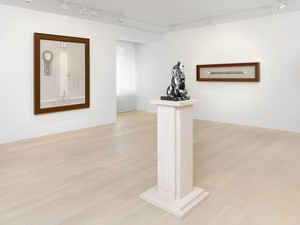
Installation view, Paul Noble, Gagosian, Geneva, November 6–December 15, 2018. Left to right: I (2015), Small Couple (Noir et Blanc) (2011), and WHAM (2016–17). Photo: Annik Wetter
Both Gagosian’s installation and the concurrent museum exhibition include drawings from the Nobson Newtown series along with selections of Noble’s recent work, made since 2015. The new works unfold within flat, planar settings, devoid of the epic scale and spatial breadth that have characterized Noble’s past drawings. The environment they present moves the viewer out of the panoptic range of Nobson and into a tightly confined, almost airless interior space. It is as though, after creating the vastness of an entire city, Noble has telescoped in on a single house, room, doorway, or object.
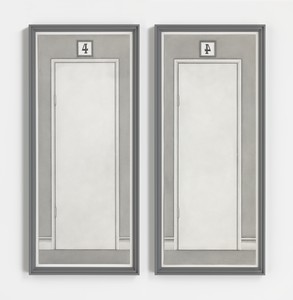
Paul Noble, 4, 2015, pencil on paper, in artist’s frames, in 2 parts, each: 60 ⅜ × 26 ⅞ × 2 ¾ inches (153.4 × 68.2 × 7 cm). Photo: Mike Bruce
While the large works of Nobson Newtown were unframed, reinforcing their sense of vastness, these drawings are encased within heavy wooden frames of Noble’s own design, which often echo the framed images within the drawings themselves. In this way, the suggestion—latent in Noble’s work—that a drawing can also be a sculpture emerges.
Characterized by a flatness of perspective and a uniformity of light, these pictures contain certain recurring motifs: a leg, large and incongruous like a divine icon; mysterious doors, always concealing whatever is behind them; and clocks that stand still at 10:45—the time at which, Noble says, Nobson was created, suggesting a surreal providence and forming a continuation between the two series of work. Scale tends to shift throughout these interiors, ranging from the minuscule to the gigantic according to an opaque logic at odds with physical reality.
This feeling of the strangely familiar, preternatural, or unsettling, reminiscent of Surrealism, resonates in Noble’s drawings, with their quietly decontextualized objects.
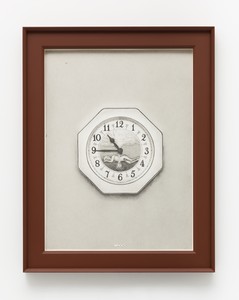
Paul Noble, c’_ock, 2015, pencil on paper, in artist’s frame, 33 ½ × 26 ⅛ × 2 ½ inches (85.1 × 66.4 × 6.4 cm). Photo: Mike Bruce
Legs stand before doors, in corridors, entryways, or other interior settings. Oriented toward the right of the picture’s edge, their form seems to conform with a character being read in left-to-right Latin script. Appearing with other objects—a clock, a cane, a feather, an egg—the inscrutable limbs suggest human presence, though they remain uncannily disconnected. This feeling of the strangely familiar, preternatural, or unsettling, reminiscent of Surrealism, resonates in Noble’s drawings, with their quietly decontextualized objects.
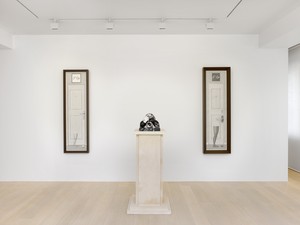
Installation view, Paul Noble, Gagosian, Geneva, November 6–December 15, 2018. Left to right: L’Eg (2015), Small Three Prone (2012), L’Eg Noir (2015). Photo: Annik Wetter
Each drawing contains encoded repetitions. Door handles are flat, open hands; keyholes take the same shape as the leg. The magician’s wand depicted in WHAM (2016–17) sits, larger than life-size, in a horizontally oriented frame. The wand, like a typographical dash, or a line made on a page, serves as a mediator, connecting elements that had no previous relationship. In magic, the wand does what a pencil does on paper, causing things to appear from nothing.
Just as Nobson developed from a typographical font—the staffs and stems of the letters making up the architectural elements of the city—this space has a peculiarly symbiotic relationship with words, too. With his titles, Noble exploits the sound of the lexeme, as well as what it signifies, with visual and homophonic puns. C’_OCK (2016), for instance, shows six clocks decreasing in size from left to right. Its title, employing an apostrophe and an underscore, makes the alphabetic character L into an image, and physically extends the word clock to the same number of glyphs as there are clocks depicted. L’Arge D’Oor (2015), meanwhile, is an overt pun on Luis Buñuel’s surrealist film L’age d’or (1930).
This affinity between the object and the word makes the acts of seeing and reading simultaneous, in that the viewer decodes at the same time that she perceives, uncovering subconscious preexisting connections. This is fitting, given that there is a sense that Noble’s task has only been to slowly reveal the universe he depicts rather than to create it—that it has always existed and that it is just now being shown to us.
Artwork © Paul Noble; Paul Noble: Open Shut, Musée des Beaux-Arts, La Chaux-de-Fonds, Switzerland, November 4, 2018–February 3, 2019; Paul Noble, Gagosian, Geneva, November 6–December 15, 2018
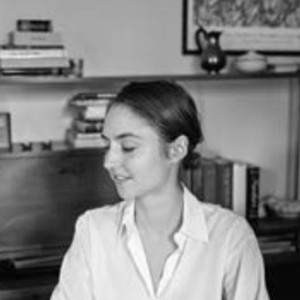
Anna Heyward is a writer and editor in New York. Her work has appeared in The New York Times, The New Yorker, Vogue, and The Paris Review Daily, among others.
This video features interview footage alongside documentation of the artist’s intensive process, serving as a faithful chronicle of Noble’s latest efforts.

David Cronenberg’s film The Shrouds made its debut at the 77th edition of the Cannes Film Festival in France. Film writer Miriam Bale reports on the motifs and questions that make up this latest addition to the auteur’s singular body of work.

The mind behind some of the most legendary pop stars of the 1980s and ’90s, including Grace Jones, Pet Shop Boys, Frankie Goes to Hollywood, Yes, and the Buggles, produced one of the music industry’s most unexpected and enjoyable recent memoirs: Trevor Horn: Adventures in Modern Recording. From ABC to ZTT. Young Kim reports on the elements that make the book, and Horn’s life, such a treasure to engage with.

Louise Gray on the life and work of Éliane Radigue, pioneering electronic musician, composer, and initiator of the monumental OCCAM series.
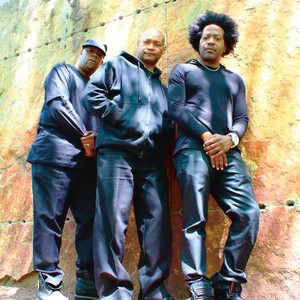
Tracing the history of white noise, from the 1970s to the present day, from the synthesized origins of Chicago house to the AI-powered software of the future.
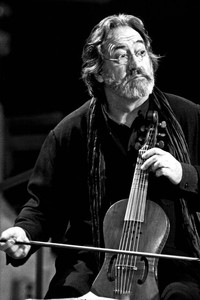
Ariana Reines caught a plane to Barcelona earlier this year to see A Sea of Music 1492–1880, a concert conducted by the Spanish viola da gambist Jordi Savall. Here, she meditates on the power of this musical pilgrimage and the humanity of Savall’s work in the dissemination of early music.
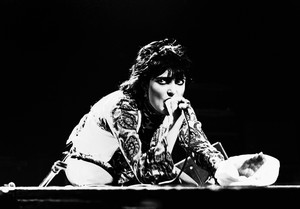
Dan Fox travels into the crypts of his mind, tracking his experiences with goth music in an attempt to understand the genre’s enduring cultural influence and resonance.
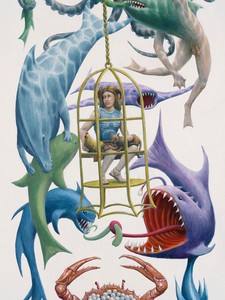
Charlie Fox takes a whirlwind trip through the Jim Shaw universe, traveling along the letters of the alphabet.
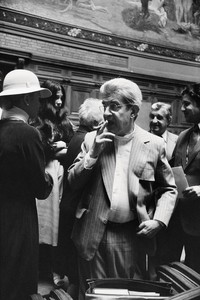
On the heels of finishing a new novel, Scaffolding, that revolves around a Lacanian analyst, Lauren Elkin traveled to Metz, France, to take in Lacan, the exhibition. When art meets psychoanalysis at the Centre Pompidou satellite in that city. Here she reckons with the scale and intellectual rigor of the exhibition, teasing out the connections between the art on view and the philosophy of Jacques Lacan.
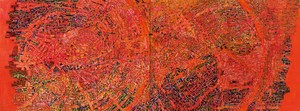
Dieter Roelstraete, curator at the Neubauer Collegium for Culture and Society at the University of Chicago and coeditor of a recent monograph on Rick Lowe, writes on Lowe’s journey from painting to community-based projects and back again in this essay from the publication. At the Museo di Palazzo Grimani, Venice, during the 60th Biennale di Venezia, Lowe will exhibit new paintings that develop his recent motifs to further explore the arch in architecture.
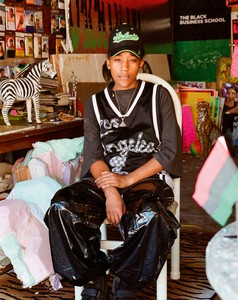
Essence Harden, curator at Los Angeles’s California African American Museum and cocurator of next year’s Made in LA exhibition at the Hammer Museum, visited Lauren Halsey in her LA studio as the artist prepared for an exhibition in Paris and the premiere of her installation at the 60th Biennale di Venezia this summer.

Michael Cary explores the history behind, and power within, Nan Goldin’s video triptych Sisters, Saints, Sibyls. The work will be on view at the former Welsh chapel at 83 Charing Cross Road, London, as part of Gagosian Open, from May 30 to June 23, 2024.